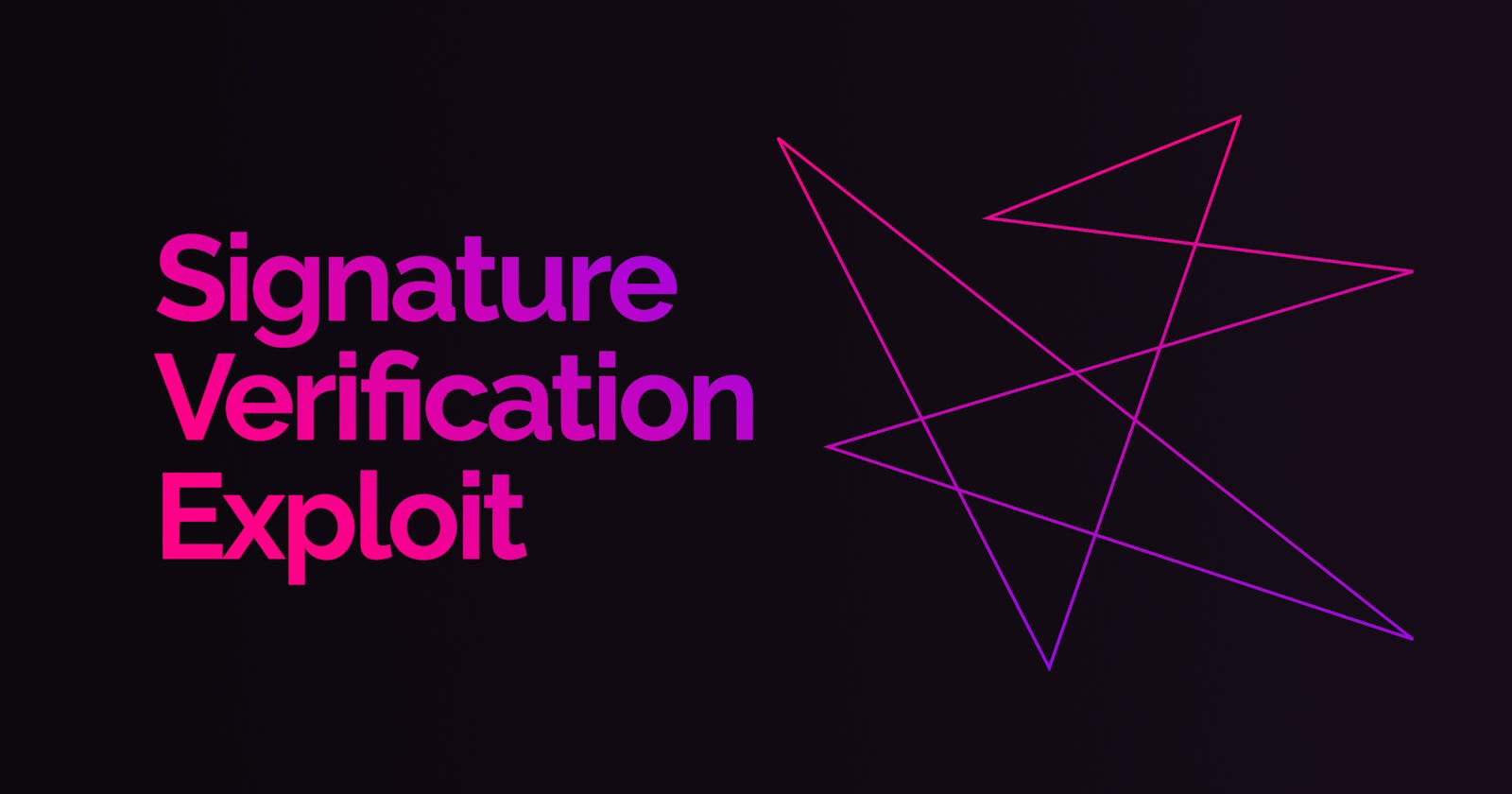Introduction
A signature verification exploit is a critical vulnerability that can affect smart contracts. This exploit arises when there is a flaw in the signature verification process, allowing attackers to falsify signatures and perform unauthorized actions. This article will explore the concept of the solidity signature verification exploit as an attack vector, give a practical example, and go over mitigation techniques to guard against this vulnerability.
Vulnerability
When a smart contract fails to correctly verify the validity of signatures, it might fall victim to the Signature Verification attack. An attacker can take advantage of this flaw to fake signatures and trick the contract into accepting unauthorized transactions. Severe implications might result from this vulnerability, including unauthorized financial transfers, access to restricted features, or contract state modification.
Exploit Example
Let's take a more straightforward case where a contract uses signature verification to approve a fund transfer. The contract contains a function transfer that requires a valid signature from the sender to execute the transfer. However, due to a flaw in the signature verification process, the contract is vulnerable to forgery.
contract MyContract {
function transfer(uint256 amount, bytes memory signature) public {
address sender = msg.sender;
require(verifySignature(sender, amount, signature), "Invalid signature");
// Perform the transfer
// ...
}
function verifySignature(address signer, uint256 amount, bytes memory signature) internal returns (bool) {
// Incorrect signature verification implementation
// ...
}
}
In the above code, the transfer function attempts to verify the provided signature using the verifySignature function. However, the implementation of verifySignature is flawed, allowing an attacker to bypass the signature check and execute unauthorized transfers.
Impact and Consequences
A successful Signature Verification exploit may have far-reaching effects. It may result in financial losses, unauthorized access to confidential functions, contract state manipulation, or the compromise of user data. The impact of this attack might have serious consequences for users and the integrity of the system, depending on the contract's nature and features.
Mitigation Strategies
To avoid the dangers associated with the Signature Verification attack, developers should use robust signature verification techniques. Here are some strategies to consider:
Use Standard Libraries: Rather than rebuilding the wheel, developers may use well-established cryptographic libraries that provide reliable signature verification functions. OpenZeppelin's ECDSA library, for example, provides safe and validated techniques for signature verification.
Implement Proper Signature Verification: Developers should carefully develop the signature verification procedure, ensuring that it adheres to the best cryptographic practices. The process should include checking the authenticity of the provided signature against the expected signer and data.
contract MyContract { function transfer(uint256 amount, bytes memory signature) public { address sender = msg.sender; require(verifySignature(sender, amount, signature), "Invalid signature"); // Perform the transfer // ... } function verifySignature(address signer, uint256 amount, bytes memory signature) internal pure returns (bool) { bytes32 messageHash = keccak256(abi.encodePacked(signer, amount)); bytes32 ethSignedMessageHash = ECDSA.toEthSignedMessageHash(messageHash); address recoveredSigner = ECDSA.recover(ethSignedMessageHash, signature); return recoveredSigner == signer; } }The improved
verifySignaturefunction uses theECDSAlibrary to properly recover the signer from the provided signature and compare it to the expected signer.Security Audits: Regular security audits performed by credible auditors or auditing firms can assist in identifying flaws in the contract's signature verification procedure. Auditors can offer significant insights and recommendations for strengthening the contract's security posture.
Consider incorporating external verification services that specialize in signature validation. Through separate validation processes, these services can offer an extra layer of security and assure the legitimacy of signatures.
Conclusion
The Signature Verification attack poses a severe danger to Solidity-based smart contracts. It gives attackers the ability to fake signatures and carry out unauthorized operations within the contract. To mitigate this issue, developers should build robust signature verification techniques, use known libraries or external verification services, and perform frequent security audits. By using these mitigation techniques, developers may improve the security and trustworthiness of their smart contracts, protecting both user assets and the integrity of the blockchain ecosystem.
